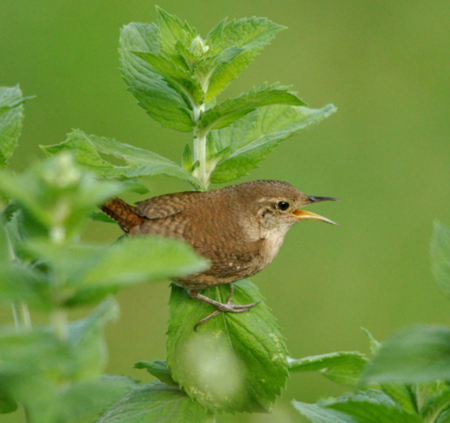Click below to listen to my 2 min. Garden Bite radio show: A grass for butterflies
Audio PlayerI’m on a grass kick this week! ‘Eyelash’ grass won’t replace a manicured lawn but it sure attracts butterflies! That’s what the University of Minnesota Extension says. Blue Grama grass, which sounds funny itself, is a native grass that goes by a few other names including ‘eyelash’, ‘mosquito’ and ‘caterpillar’ grass because of its golden sails at the tip of its stems.
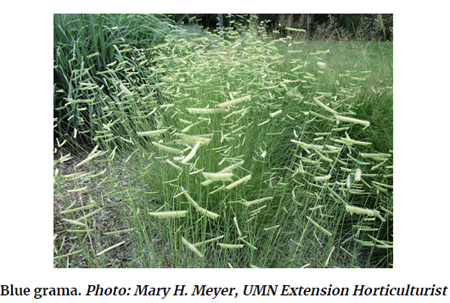
Extension Horticulturist, Mary Meyer, says this is one tough short grass. It is drought tolerant and can grow with very little rainfall or supplemental water. It also provides food for more than a dozen butterflies species as well as wildlife.
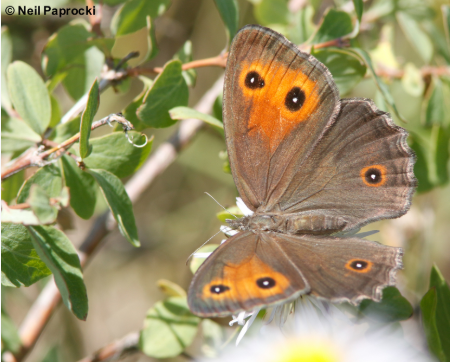
Blue grama foliage is blue green, kinda gray color that is often associated with dryland plants. The flowers are distinctive and make it an easy plant to identify.
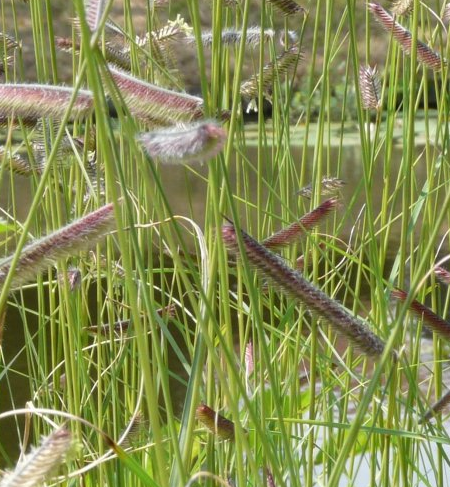
The flowers resemble eyelashes, with the florets along one side, packed tightly together in 1-3 inches. Growing usually 6 inches to 2 feet, this is a good plant to use in median strips, along a sidewalk or street, in rock gardens, on septic berms or sunny areas. There’s a cultivar called ‘Blonde Ambition’.
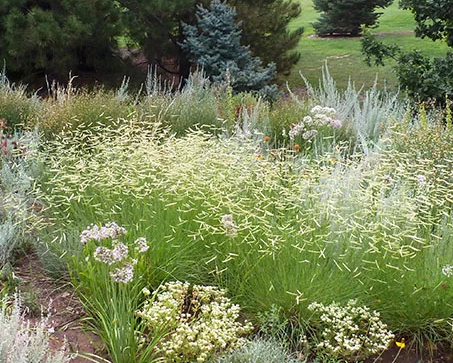
Because blue grama grows so slowly, it can be used as a low maintenance lawn in drier locations.
‘Hachita’ is another cultivar to use as lawn…
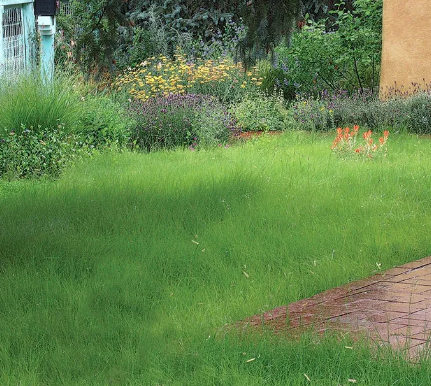
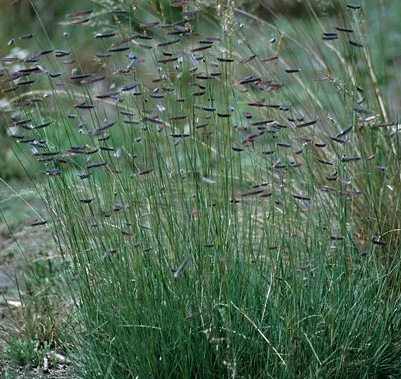
Meyer says she and a colleague counted 13 different kinds of butterfly larvae feed on blue grama, including, many skippers. Grasshoppers and wild turkeys also feed on blue grama; bison love it as well. Although I’m pretty sure they’re not going to be strolling your neighborhood!
Although I DO know a garden Bite listener who DOES have bison right across the road from her! Several birds have been noted as feeding on blue grama seed, including grassland sparrows and wrens, too.
